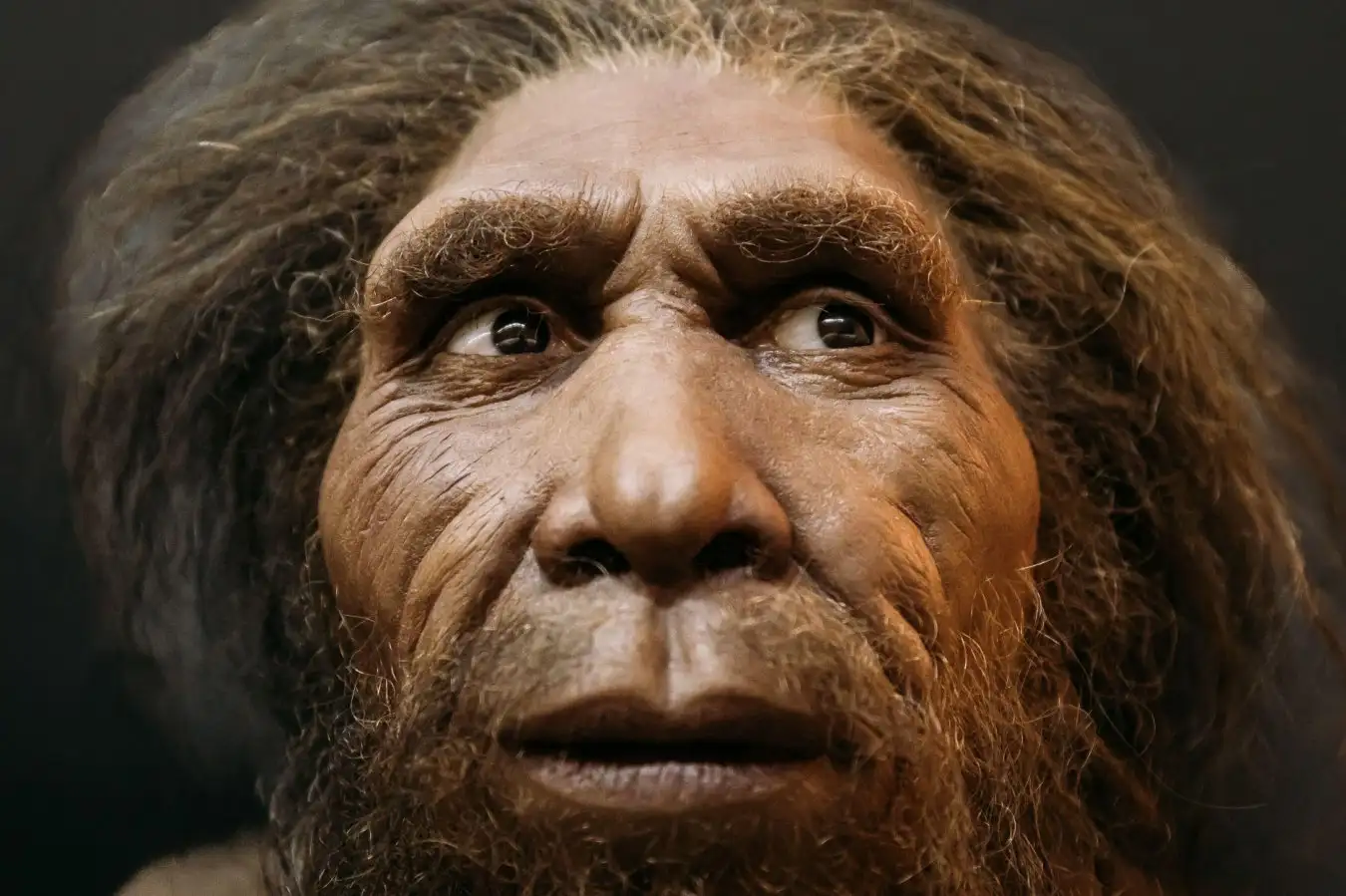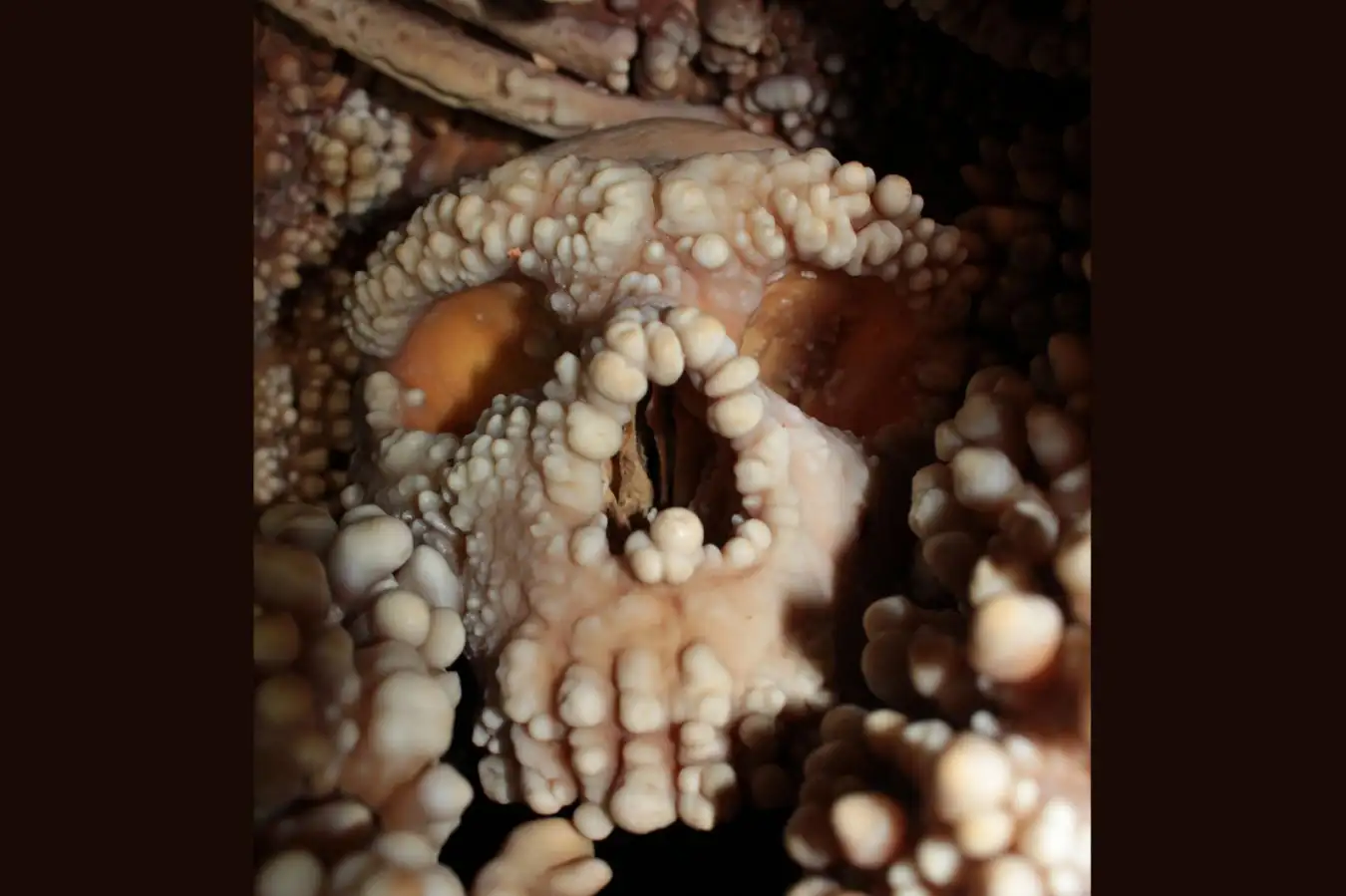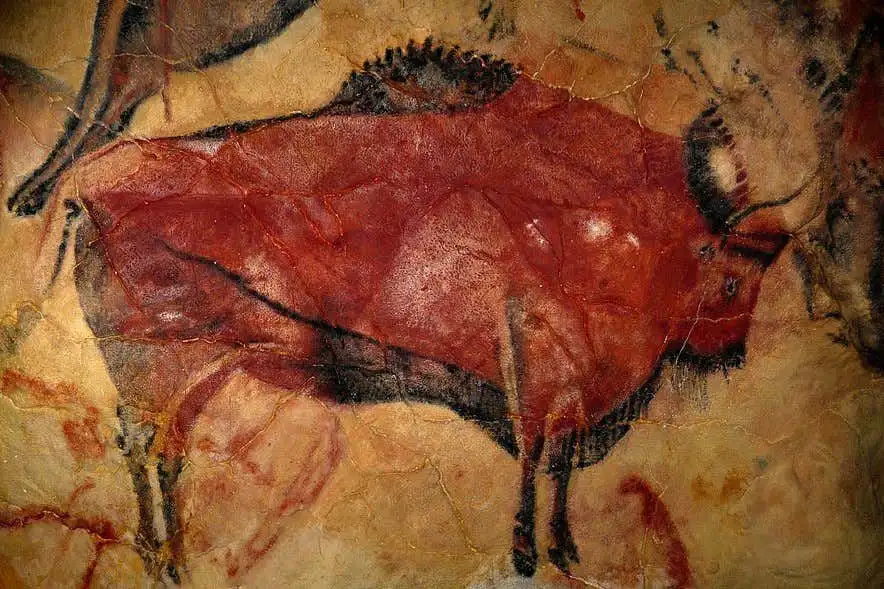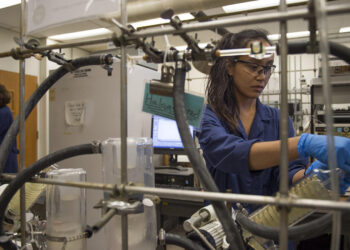
A reconstruction of a Neanderthal face
Ryhor Bruyeu/Alamy
The first analysis of a well-preserved nasal cavity in the human fossil record has revealed that the hefty Neanderthal nose wasn’t adapted to cold climates in the way many people thought it was.
Neanderthals (Homo neanderthalensis) lived between about 400,000 and 40,000 years ago, and some specimens have been found with distinct structures in their nasal cavities that have been proposed as defining features for the species. Some researchers have suggested that living through repeated glacial conditions led them to develop these structures to adapt to cold weather, helping them warm up inhaled air inside their distinctive large noses.
However, the structures uncovered so far are generally damaged and good fossil evidence for the complete picture within the Neanderthal nose has been lacking.

The skull of Altamura Man, a Neanderthal fossil encased in rock
K.A.R.S.T. PRIN Project
Costantino Buzi at the University of Perugia in Italy and his colleagues have now got such evidence from a Neanderthal specimen known as Altamura Man, which is between 172,000 and 130,000 years old. The skeleton is embedded in rock in Lamalunga cave near the town of Altamura in southern Italy, and is peppered with what are known as popcorn concretions – small nodules of calcite – that give it the appearance of a coral reef.
“It’s probably the most complete human fossil ever discovered,” says Buzi. But the delicate specimen can’t be removed, so he and his colleagues took their equipment through the narrow parts of the cave and used an endoscope to peer inside the skull, allowing them to digitally reconstruct its well-preserved internal nasal bony structures.
“This surely is the first time we have clearly seen these structures in a human fossil,” says Buzi.
Surprisingly, there was no sign of the inner nasal features thought to be a defining feature of Neanderthals, including a ridge of bone known as a vertical medial projection, a swelling on the nasal cavity walls and a lack of a bony roof over the lacrimal groove.
But Altamura Man is undoubtedly a Neanderthal, according to its general morphology, dating and genetics, says Buzi. This means that these nasal structures should no longer be considered defining Neanderthal features, he says, and the large nose and jutting-out upper jaw are unlikely to have been shaped by them. “We can finally say that some traits that were considered diagnostic in the Neanderthal cranium do not exist,” says Buzi.
The large Neanderthal nasal cavity is just related to having a larger cranial structure, he says, although his team did find that the turbinates – scroll-like structures on the walls of the nasal cavity – are quite big, which would help warm the air inside.
“These results indicate that the typical Neanderthal facial shape was not driven by respiratory adaptation to cold, but rather by developmental factors and overall body proportions,” says Ludovic Slimak at the University of Toulouse in France. “The study challenges a long-held idea about Neanderthal evolution and provides the first direct evidence of how their breathing system actually looked and functioned.”
The study also chimes with another from September by some of the same researchers, which suggests that it was a unique neck adaptation, acquired under the selective pressure of glacial environments, that drove the evolution of the Neanderthal face, including their jutting jaw.
“Everything in Neanderthals has been shoehorned into the idea that they’re adapted to cold, which is complete nonsense,” says Todd Rae at the University of Sussex, UK. “My guess is anatomically they were probably struggling with the cold, particularly since, tropical people – us – did fine, and they went extinct by the last glacial maximum.”

Ancient caves, human origins: Northern Spain
Discover some of the world’s oldest known cave paintings in this idyllic part of Northern Spain. Travel back 40,000 years to explore how our ancestors lived, played and worked. From ancient Paleolithic art to awe-inspiring geological formations, each cave tells a unique story that transcends time.
Topics:
- Neanderthals/
- ancient humans
Source link : https://www.newscientist.com/article/2504597-neanderthals-hefty-noses-werent-well-adapted-to-cold-climates/?utm_campaign=RSS%7CNSNS&utm_source=NSNS&utm_medium=RSS&utm_content=home
Author :
Publish date : 2025-11-17 20:00:00
Copyright for syndicated content belongs to the linked Source.












